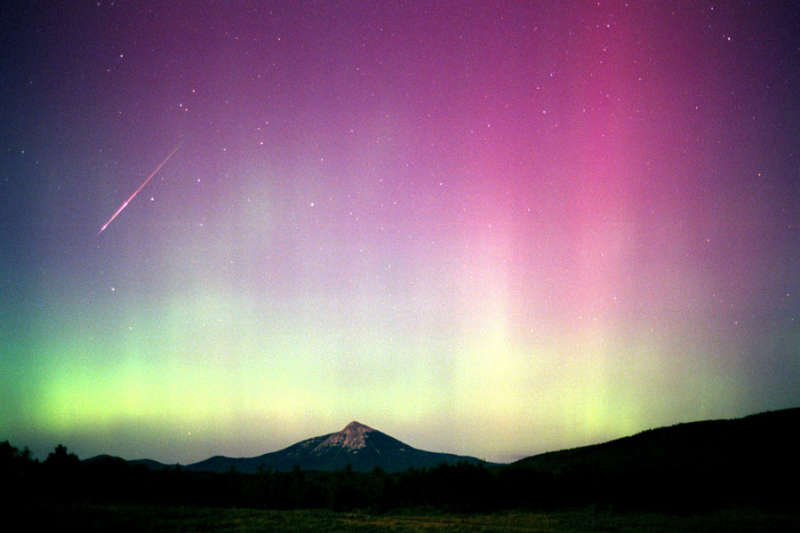Credit & Copyright: Jimmy Westlake
(Colorado
Mountain College)
Explanation:
Dark skies
are favored for viewing meteor showers --
so the best viewing of this year's Perseids will occur in the early morning.
While the Perseid
meteor shower is scheduled to peak over the
next few days, bright light from a
gibbous Moon will also
flood the early evening and mask the
majority of relatively faint meteors.
Still, skygazing in the early morning after the Moon sets (after about
2 AM local time) could reveal spectacular
earthgrazing meteors.
Persisting observing at any time after sunset can reward northern hemisphere watchers
looking
for occasional Perseid fireballs.
Astronomer Jimmy Westlake imaged this bright
Perseid meteor despite the combination
of moonlight and auroral glow over Colorado skies in August of 2000.
1999 2000 2001 2002 2003 2004 2005 2006 2007 2008 2009 2010 2011 2012 2013 2014 2015 2016 2017 2018 2019 2020 2021 2022 2023 2024 2025 |
Yanvar' Fevral' Mart Aprel' Mai Iyun' Iyul' Avgust Sentyabr' Oktyabr' Noyabr' Dekabr' |
NASA Web Site Statements, Warnings, and Disclaimers
NASA Official: Jay Norris. Specific rights apply.
A service of: LHEA at NASA / GSFC
& Michigan Tech. U.
|
Publikacii s klyuchevymi slovami:
Perseids - meteor shower - aurora - Perseidy - Meteornyi potok - polyarnoe siyanie
Publikacii so slovami: Perseids - meteor shower - aurora - Perseidy - Meteornyi potok - polyarnoe siyanie | |
Sm. takzhe:
Vse publikacii na tu zhe temu >> | |
